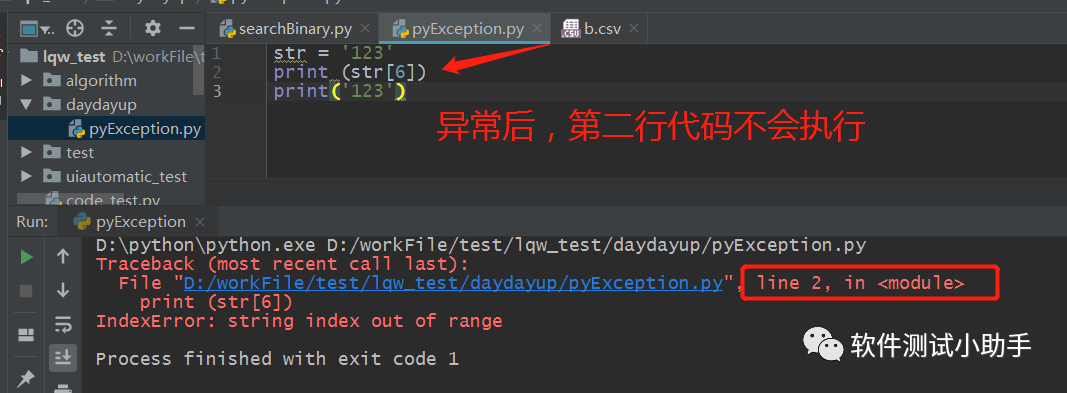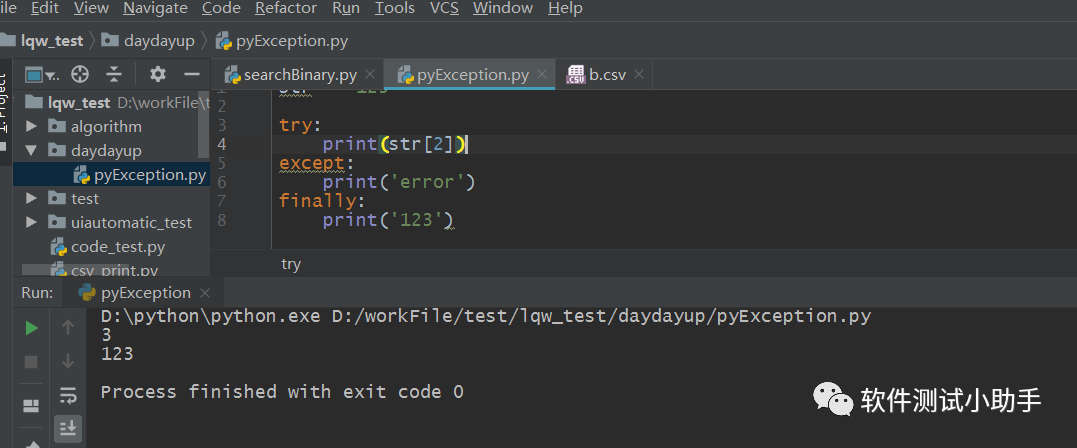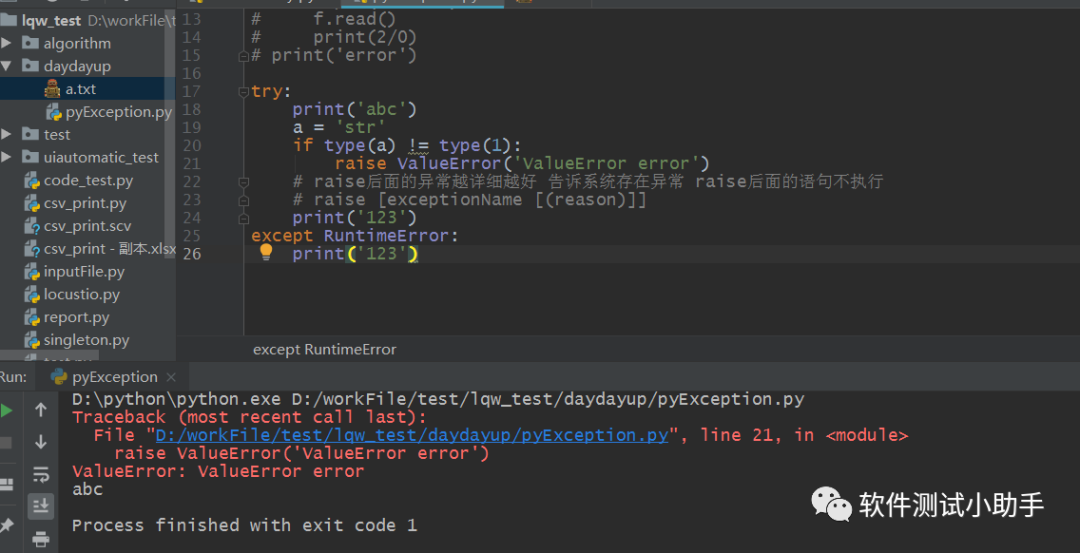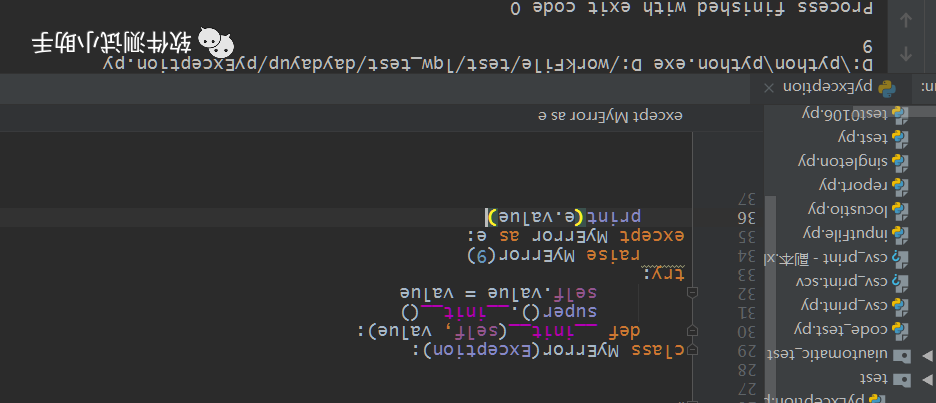Python common exception handling mechanism
Python's reengineering
1
Default exception handling
**Scenario: **If an error is reported in a certain line of the filled code, the following code will not be executed

02
try...except...
Scenario: If an exception is caught, the code behind will also be executed

03
try..except..finaly
Scenario: The code in the finally statement will be executed regardless of whether it is abnormal or not


04
try...finally...
Scenario: Since there is no exception caught by except, the statement in finally will be executed regardless of whether it is abnormal or not. If there is an exception, the code behind finally will not be executed, otherwise it will be executed.

05
assert
Scenario: If the code behind the assertion is False, interrupt the program and call the default exception handler. When assert True, continue to execute the following steps, assert False and the following code does not execute.

06
with...as..
Scenario: This can be used when the stream object needs to be closed frequently. After the with statement ends, the file will be closed automatically. If the with statement is abnormal, the default exception handler will be called, the file will be closed normally, and the following code will not be executed.

07
Throw exception raise
Syntax: raise [exceptionName [(reason)]]
Scenario: The more detailed the exception after raise, the better to tell the system that there is an exception. The statement after raise will not be executed
ps: The exception thrown in except must be less than the raise exception level and different exception types. If Exception is thrown, the exception in raise will not be output.


08
raise custom exception
**Scenario: **Users can customize the content of the exception


Recommended Posts